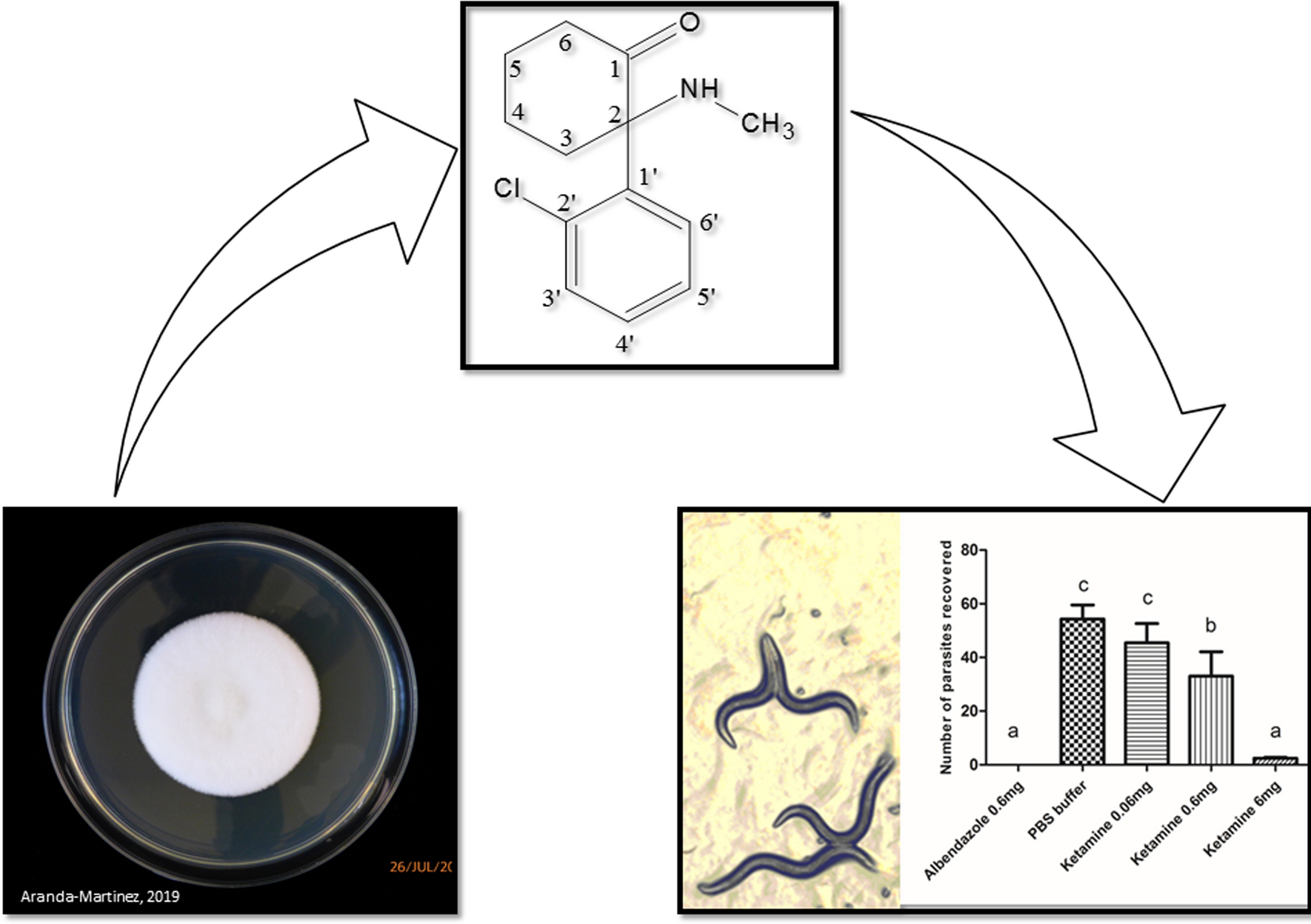Spotlight: Ketamine: Review and Hypothesis for Potential Use in Spinal Cord Injury (Liester, et al, 2024)
"Racemic ketamine is an inexpensive general anesthetic, a rapid-acting antidepressant medication, and a psychoplastogen. This medication, which is safe when used in low doses, stimulates the growth of nervous system structures, thus making it a potential option for individuals who suffer from SCI."

Ketamine: Review and Hypothesis for Potential Use in Spinal Cord Injury (Liester, et al, 2024)
See also:
Ketamine can be produced by Pochonia chlamydosporia: an old molecule and a new anthelmintic? - Parasites & Vectors
Background Infection by nematodes is a problem for human health, livestock, and agriculture, as it causes deficits in host health, increases production costs, and incurs a reduced food supply. The control of these parasites is usually done using anthelmintics, which, in most cases, have not been fully effective. Therefore, the search for new molecules with anthelmintic potential is necessary. Methods In the present study, we isolated and characterized molecules from the nematophagous fungus Pochonia chlamydosporia and tested these compounds on three nematodes: Caenorhabditis elegans; Ancylostoma ceylanicum; and Ascaris suum. Results The ethyl acetate extract showed nematicidal activity on the nematode model C. elegans. We identified the major substance present in two sub-fractions of this extract as ketamine. Then, we tested this compound on C. elegans and the parasites A. ceylanicum and A. suum using hamsters and mice as hosts, respectively. We did not find a difference between the animal groups when considering the number of worms recovered from the intestines of animals treated with ketamine (6 mg) and albendazole (P > 0.05). The parasite burden of larvae recovered from the lungs of mice treated with ketamine was similar to those treated with ivermectin. Conclusions The results presented here demonstrate the nematicidal activity of ketamine in vitro and in vivo, thus confirming the nematicidal potential of the molecule present in the fungus P. chlamydosporia may consist of a new method of controlling parasites.

"...in the present work, we have extracted and characterized a new metabolite of P. chlamydosporia: the molecule ketamine. We evaluated this molecule on nematodes, C. elegans, A. suum and A. ceylanicum, and here, we present unprecedented to our knowledge, results of its nematicide activity."


